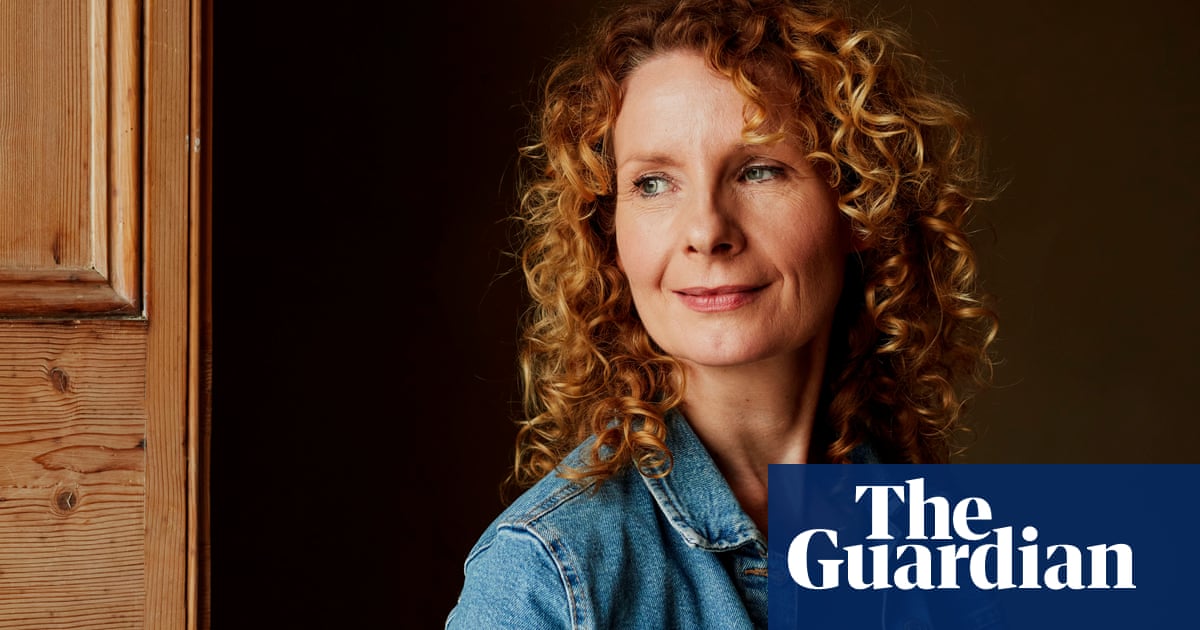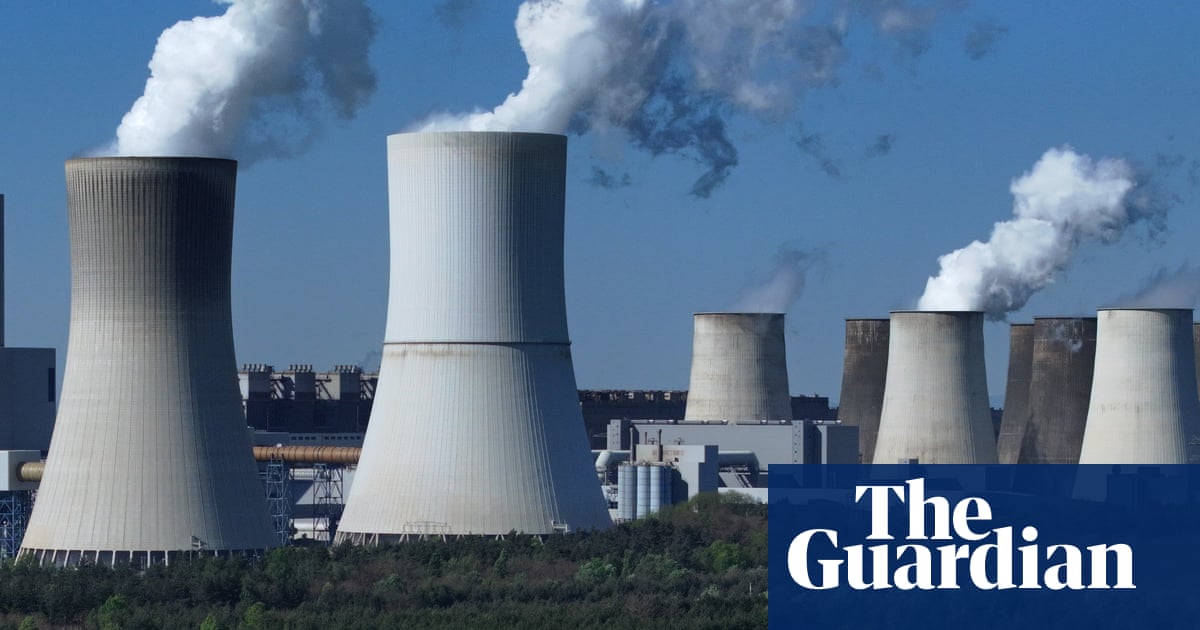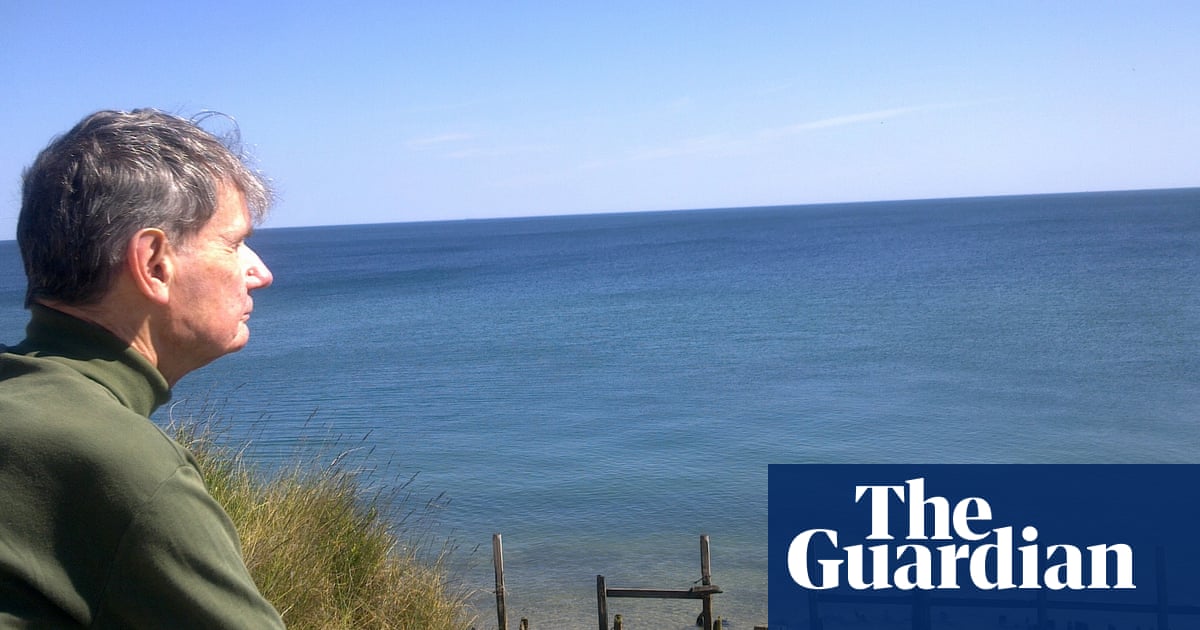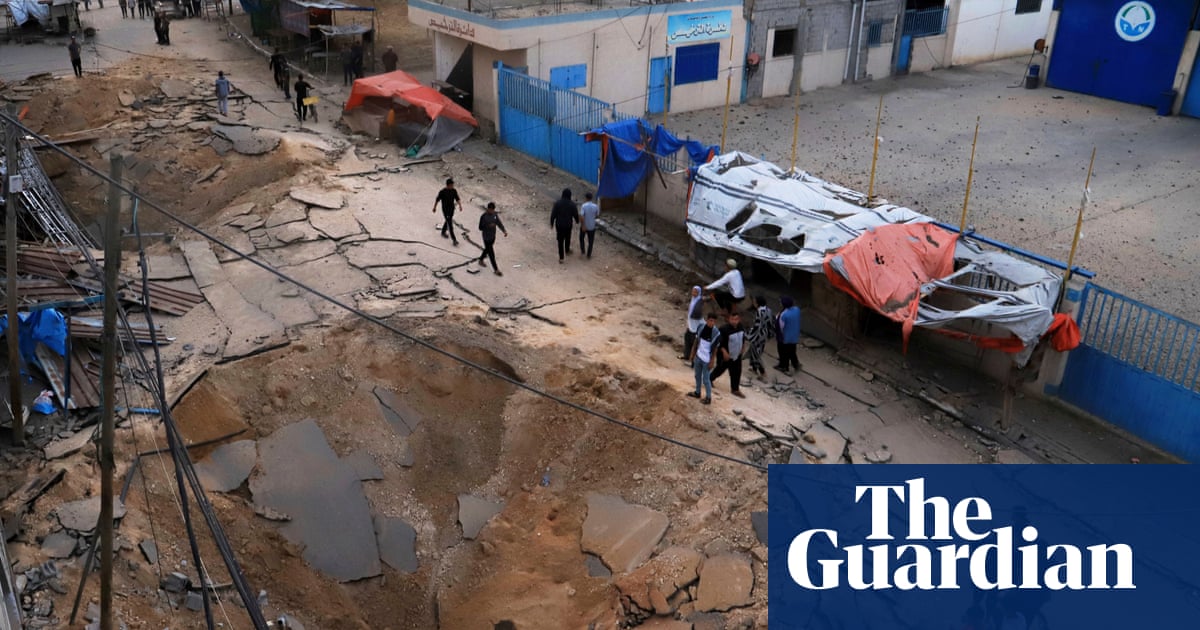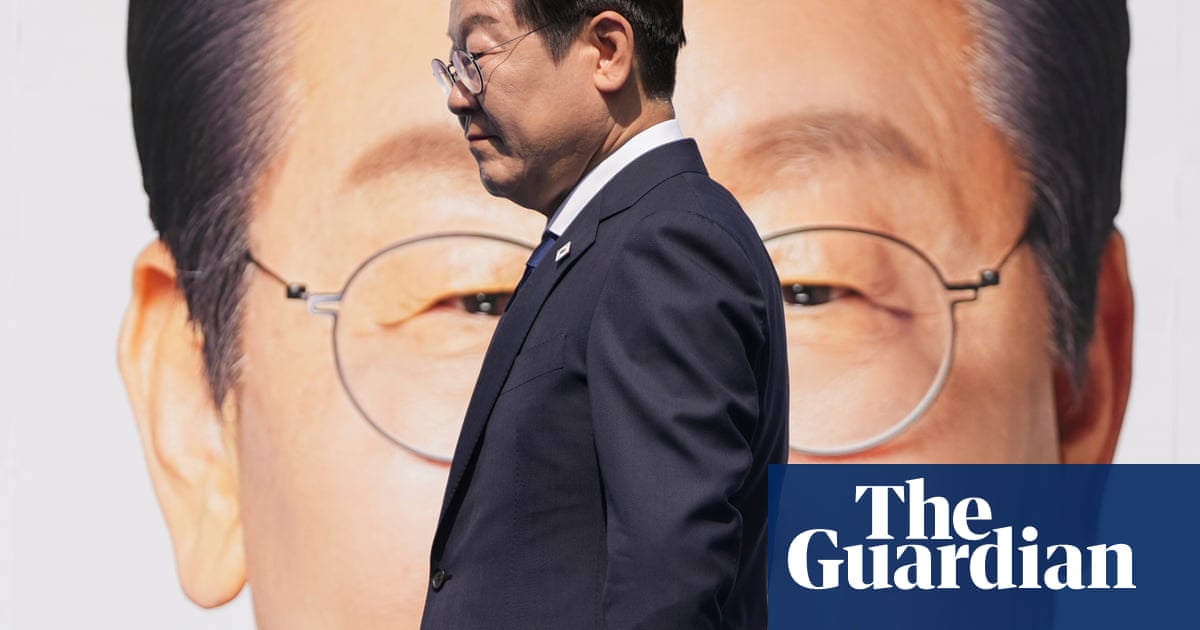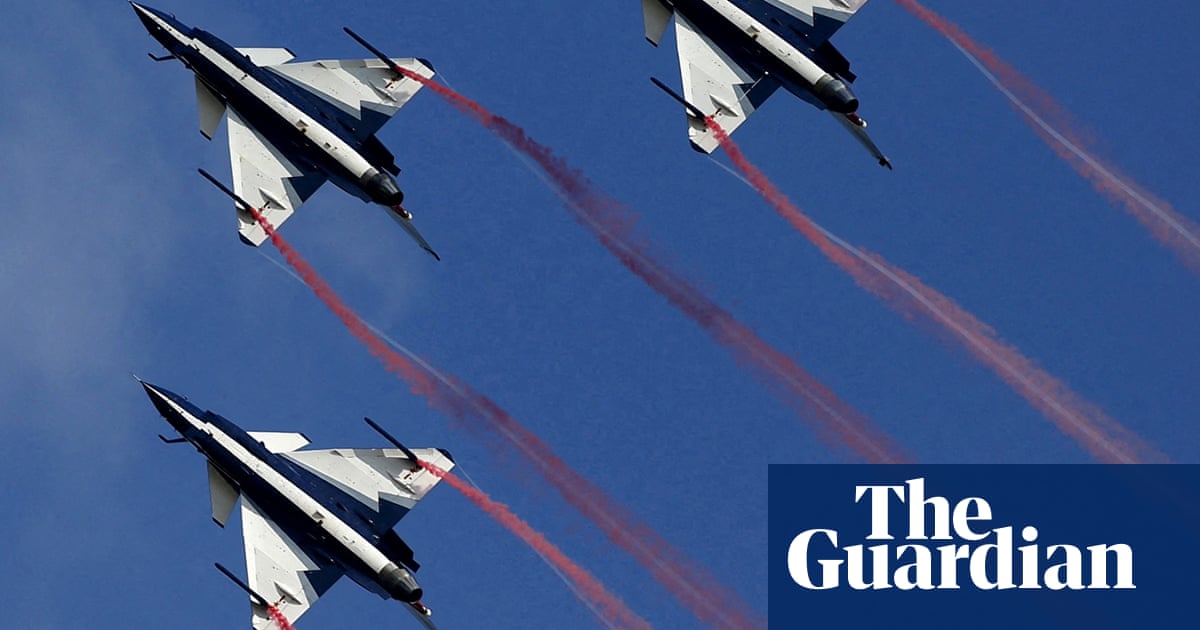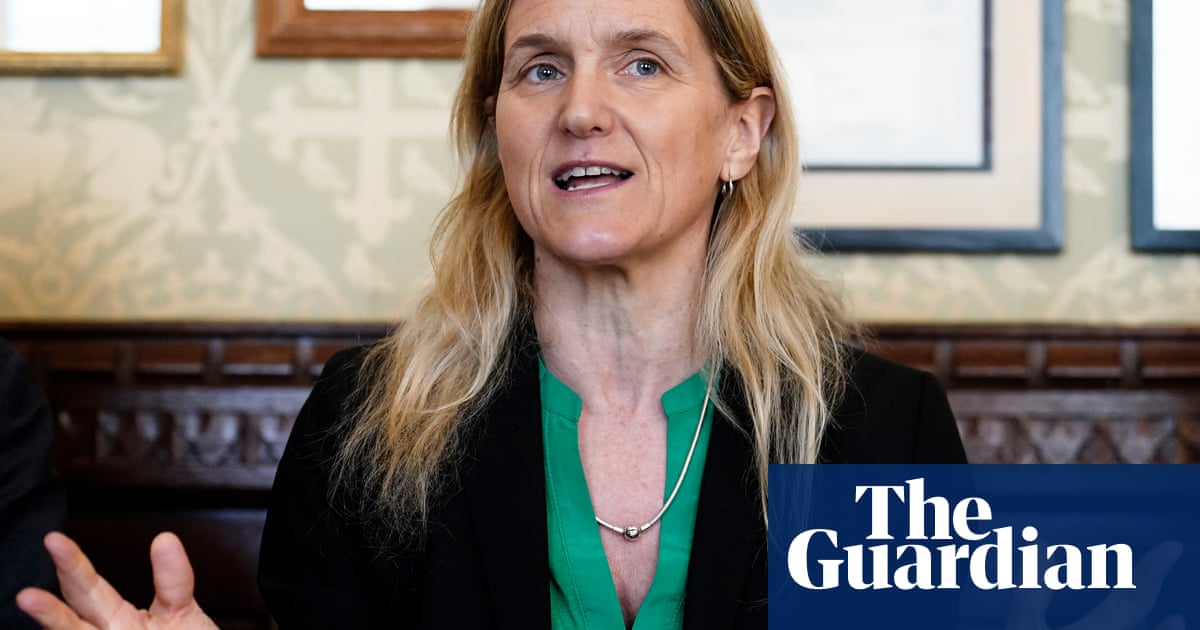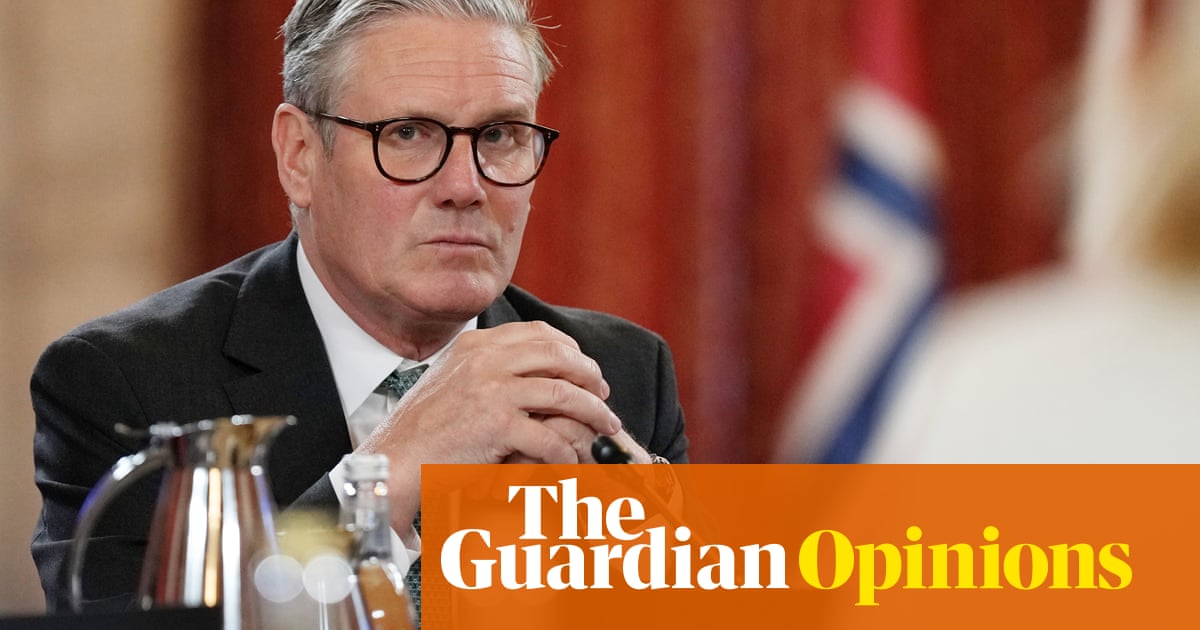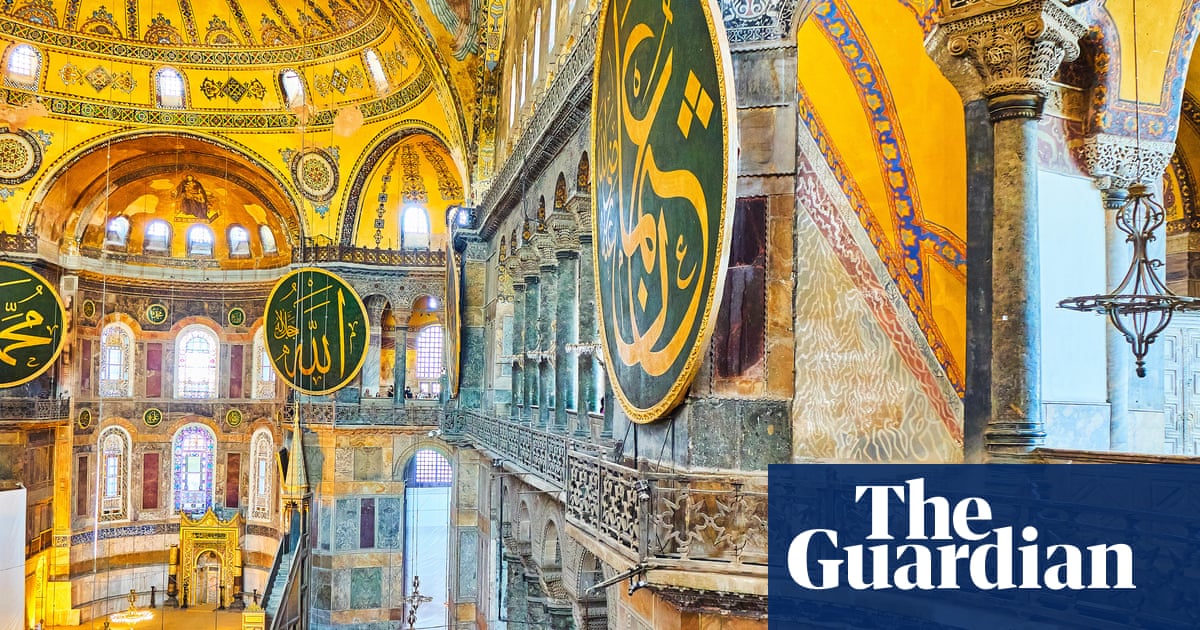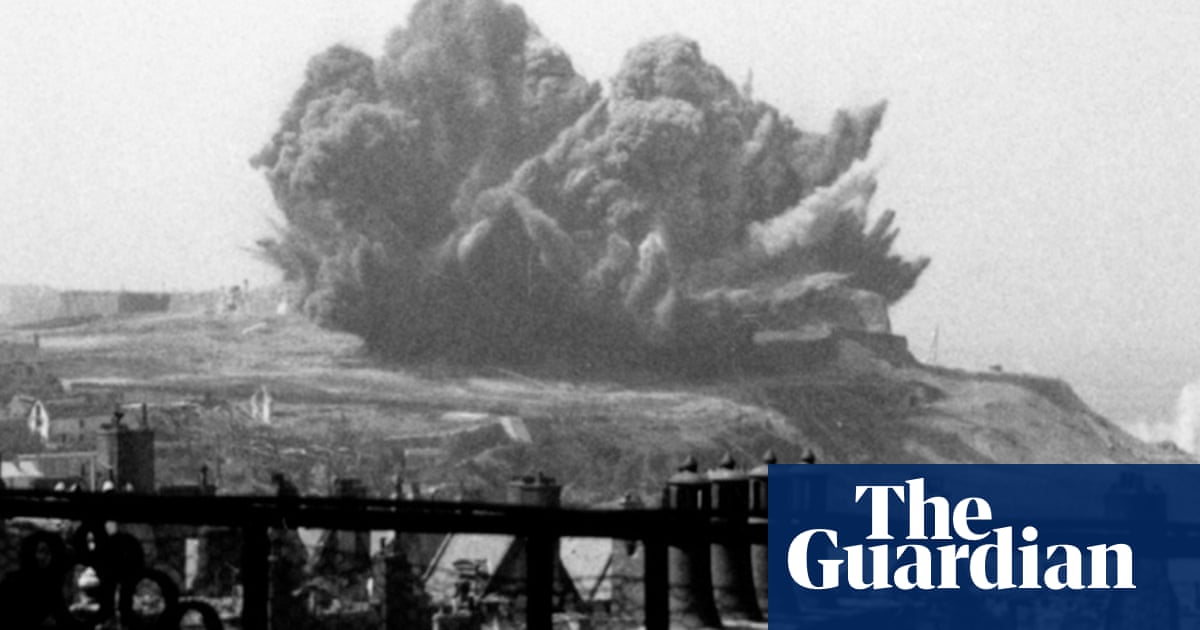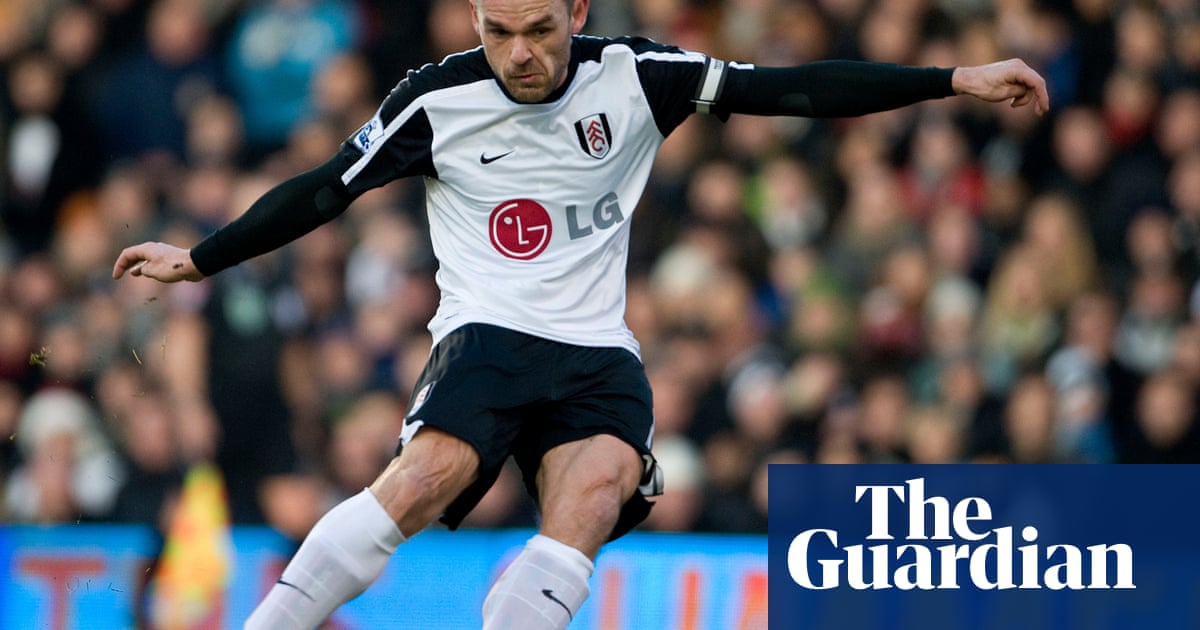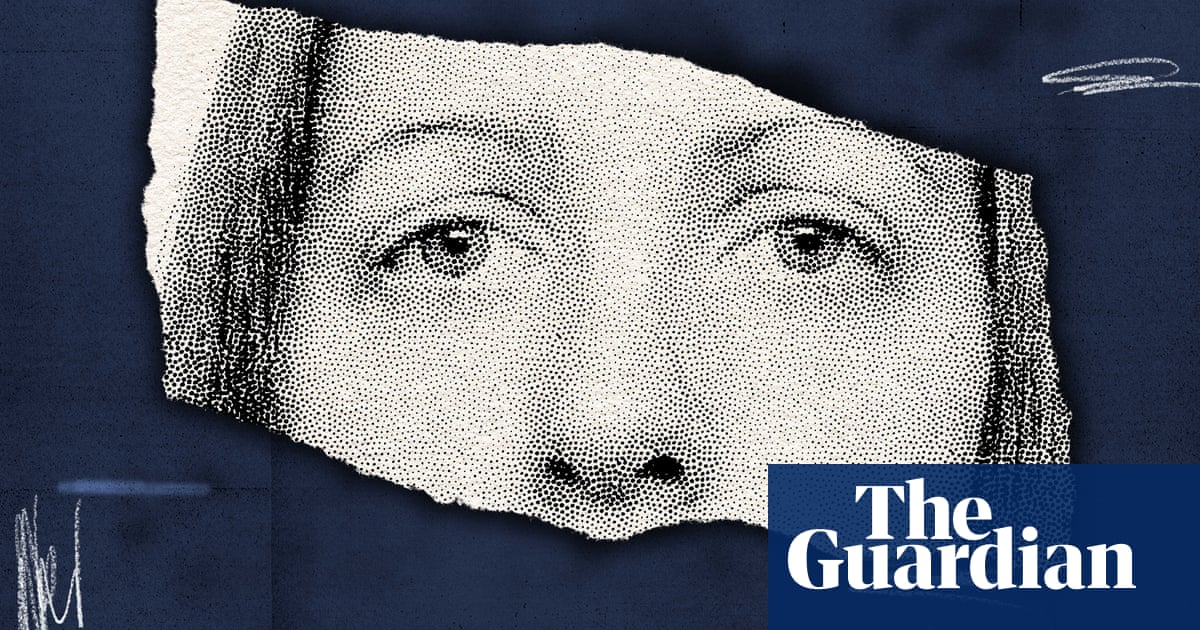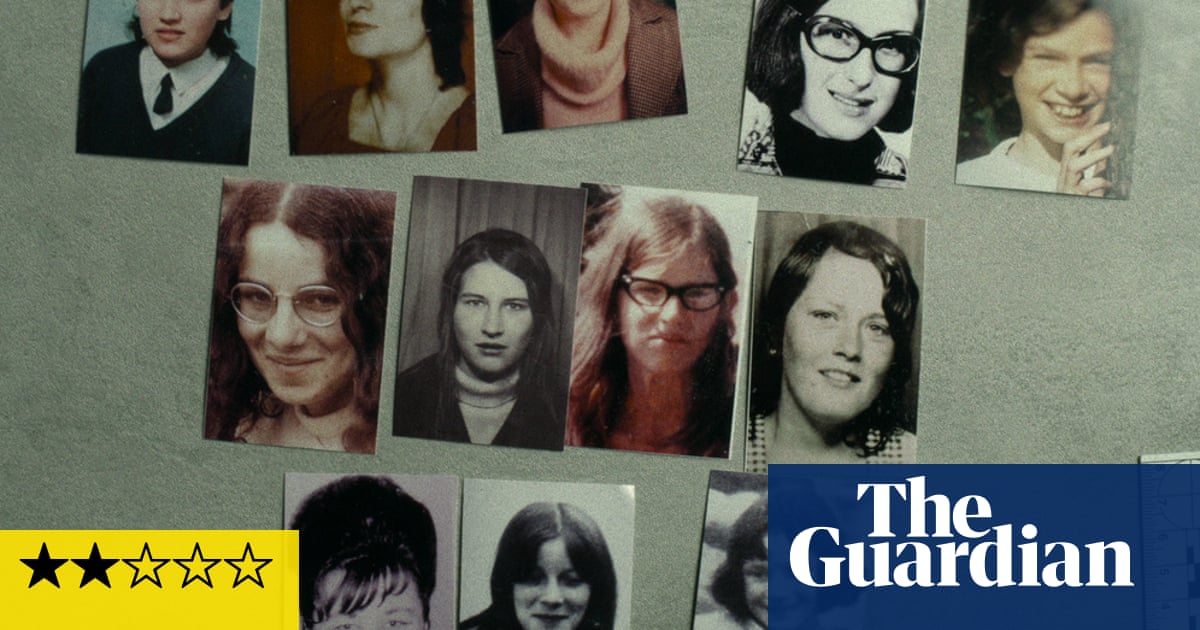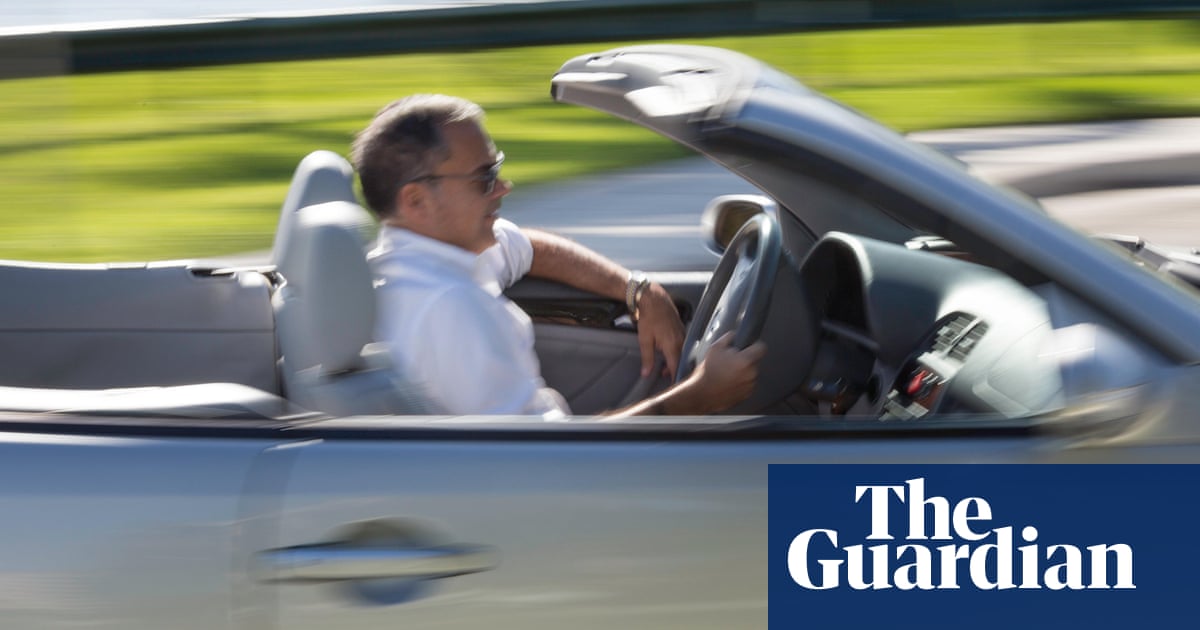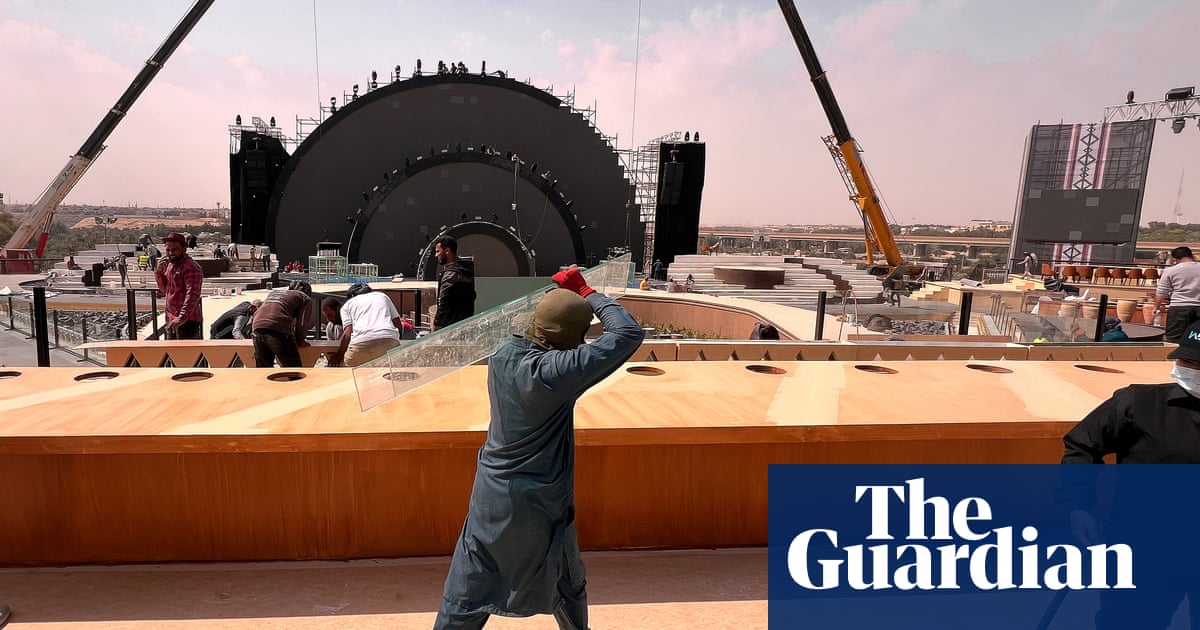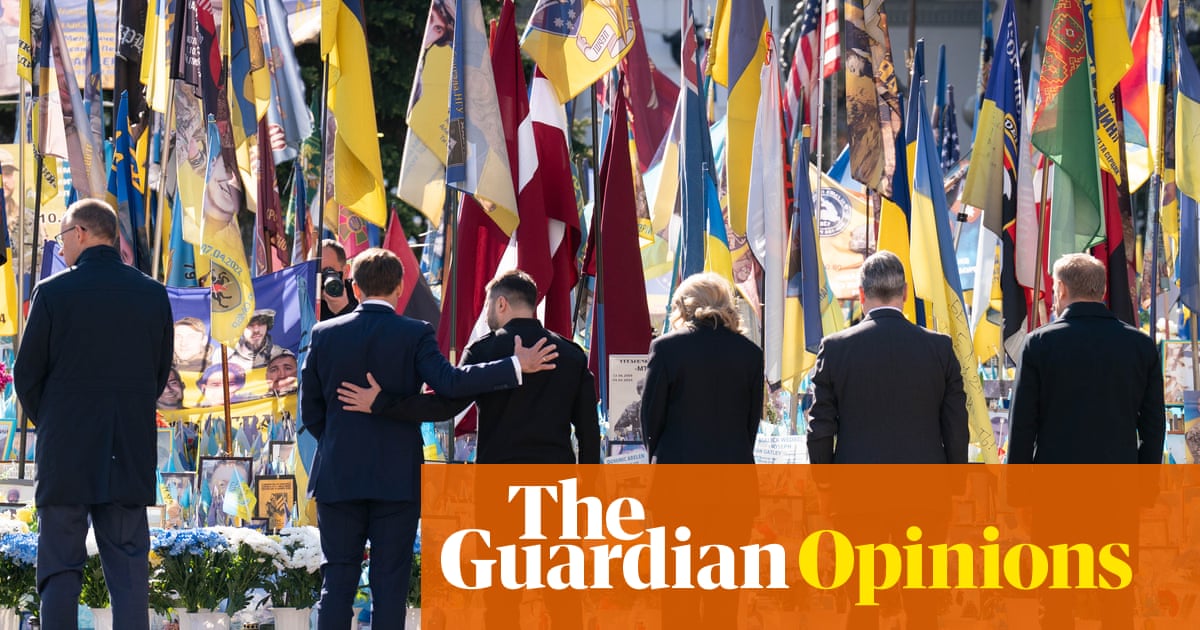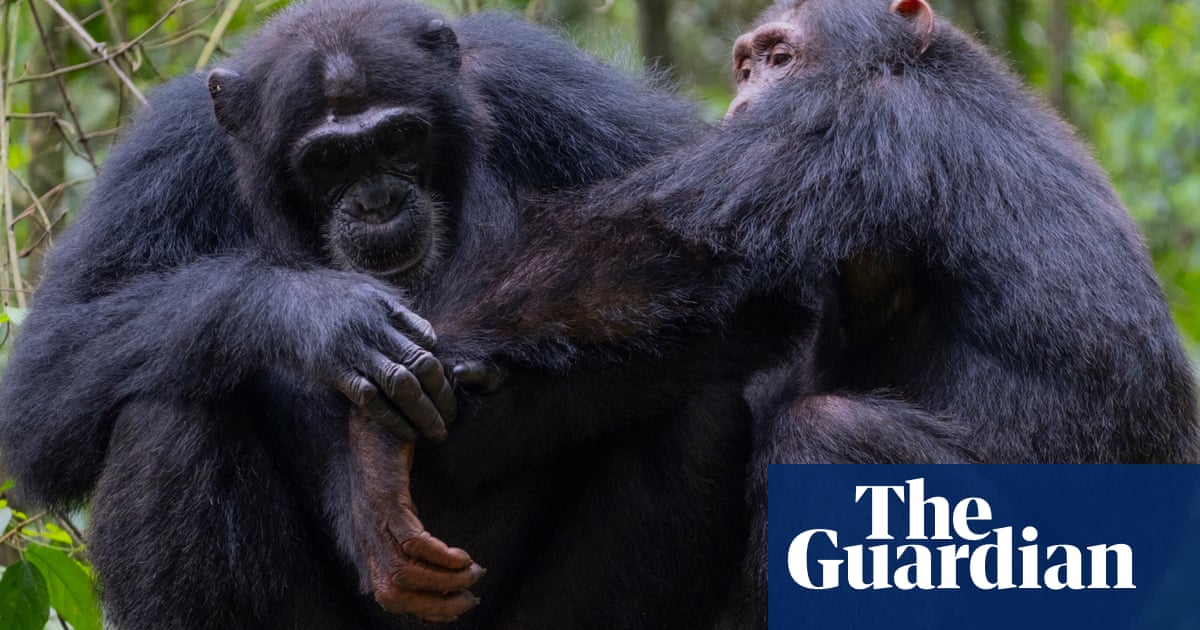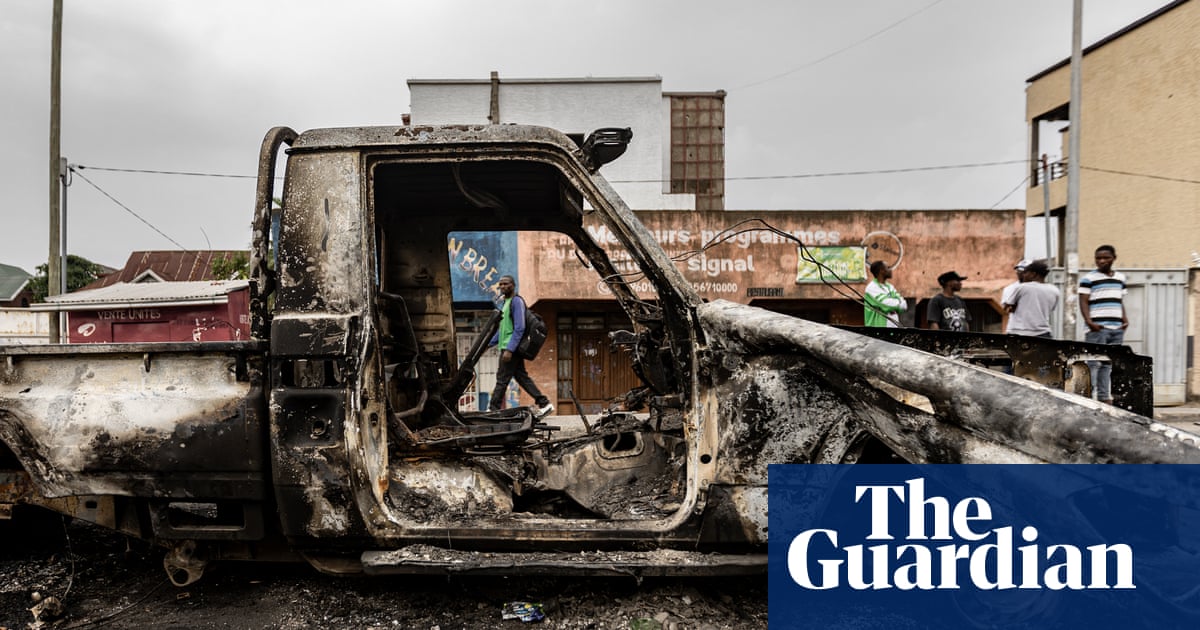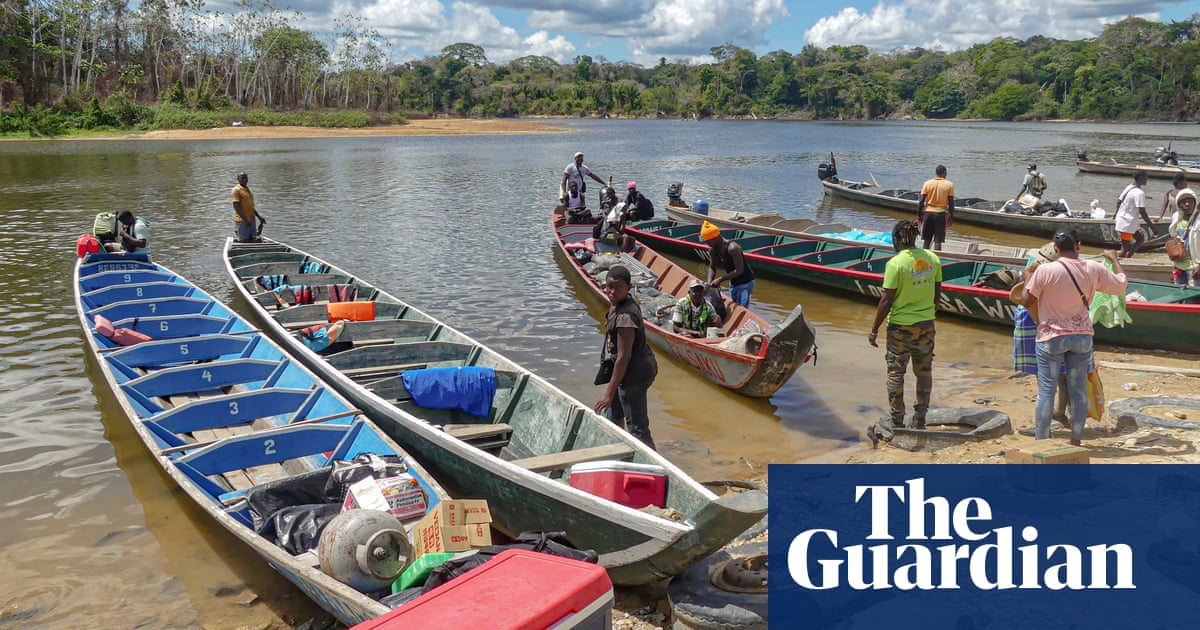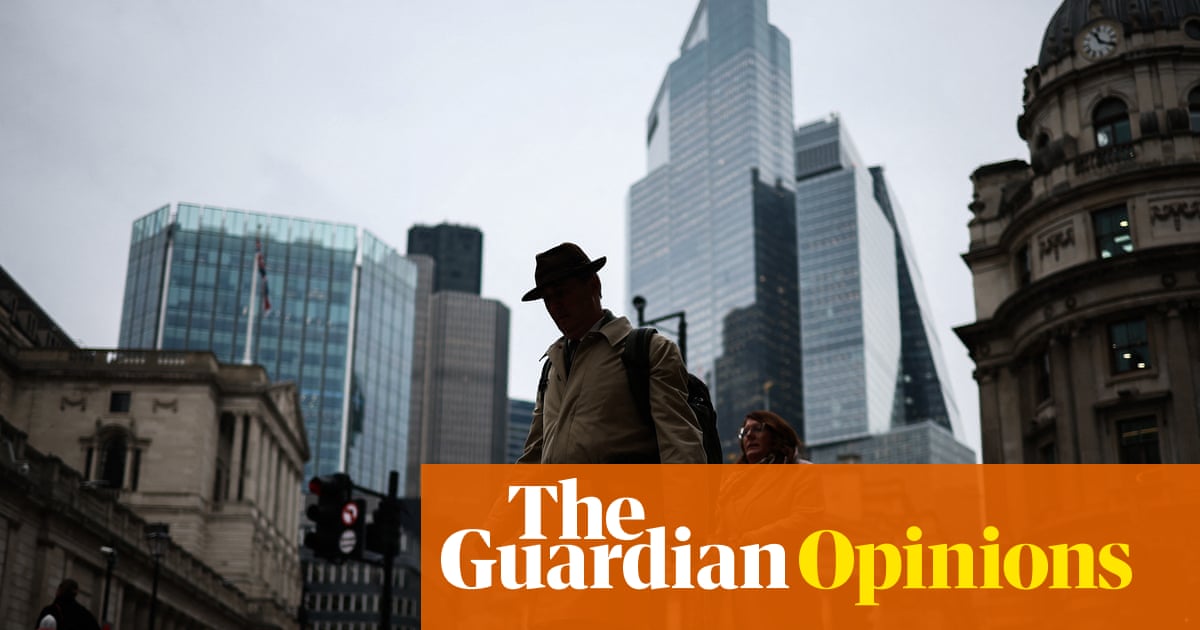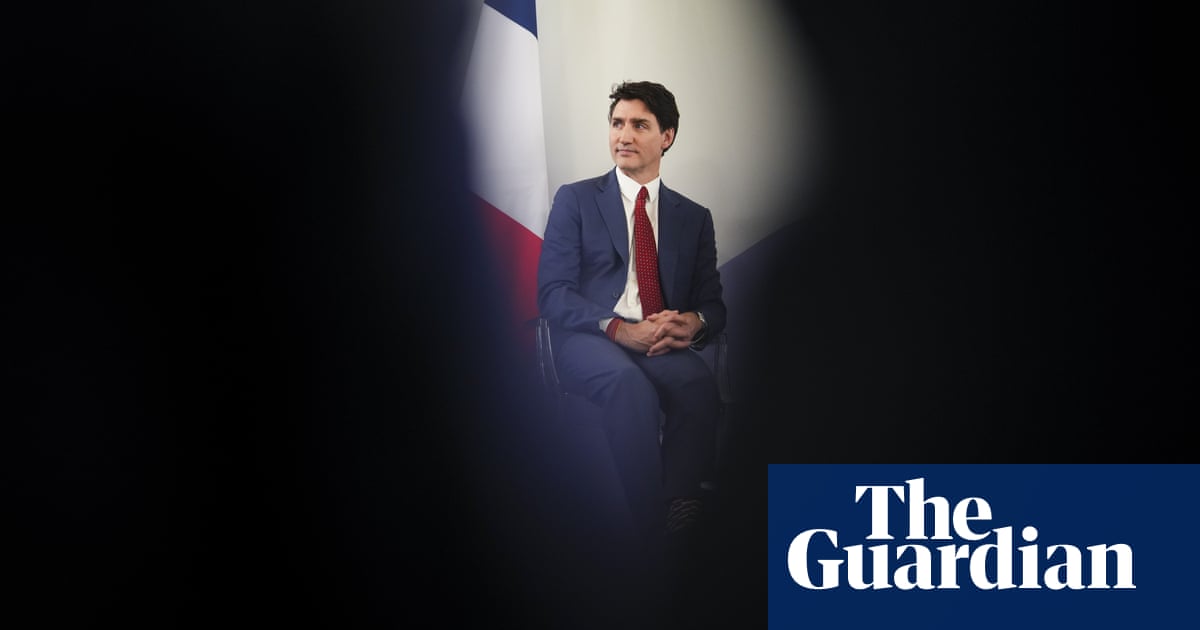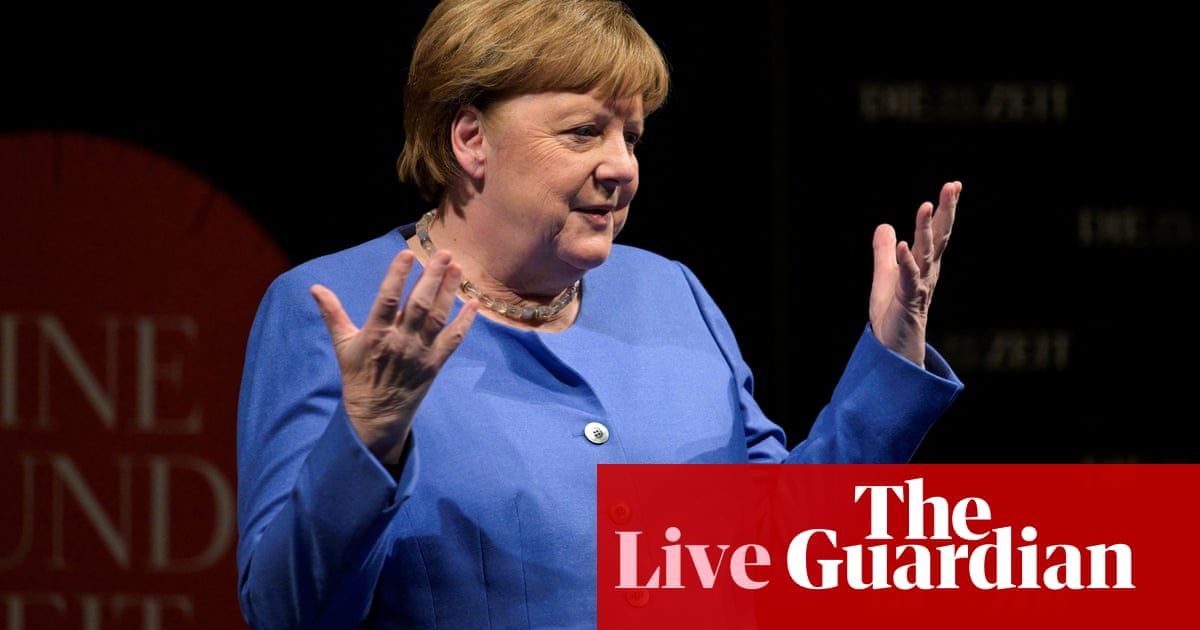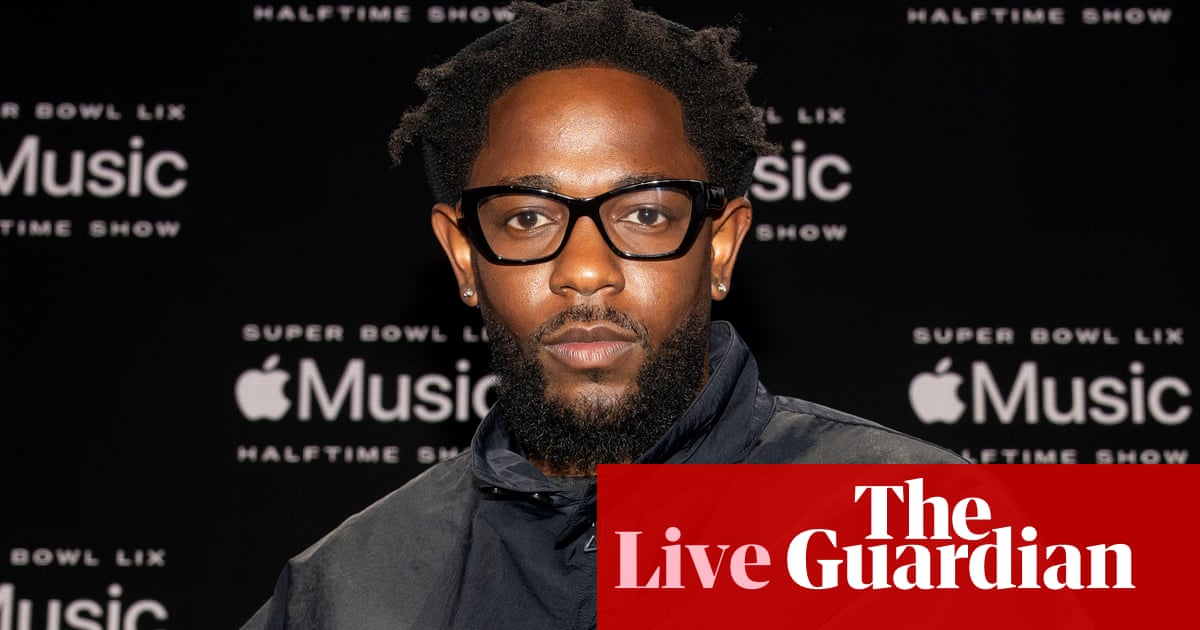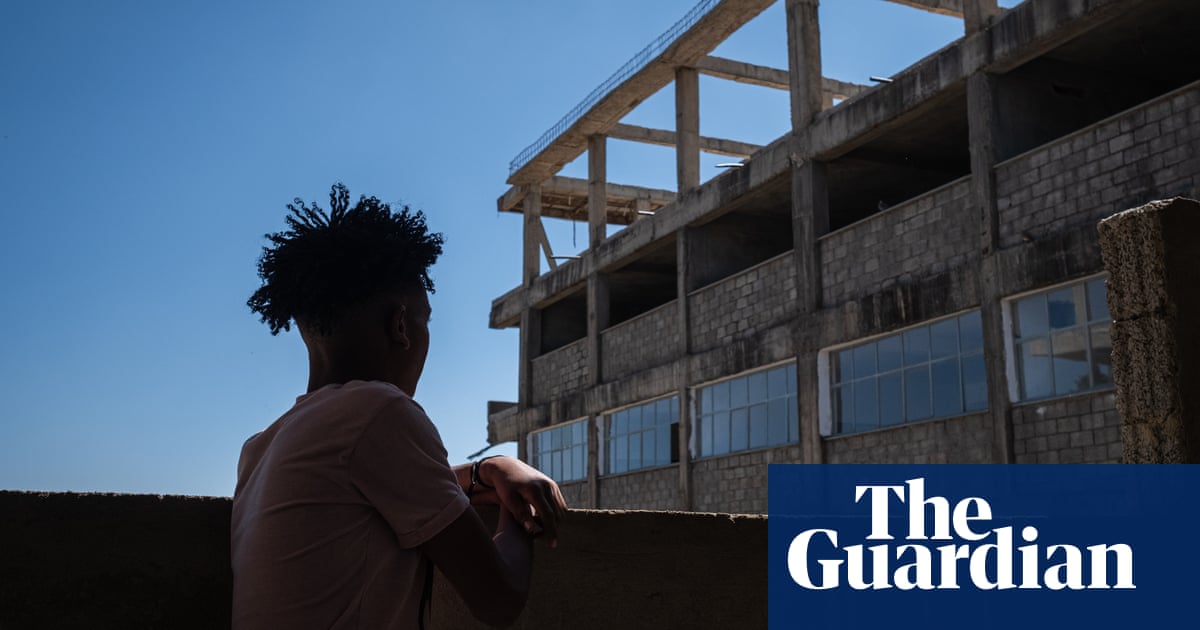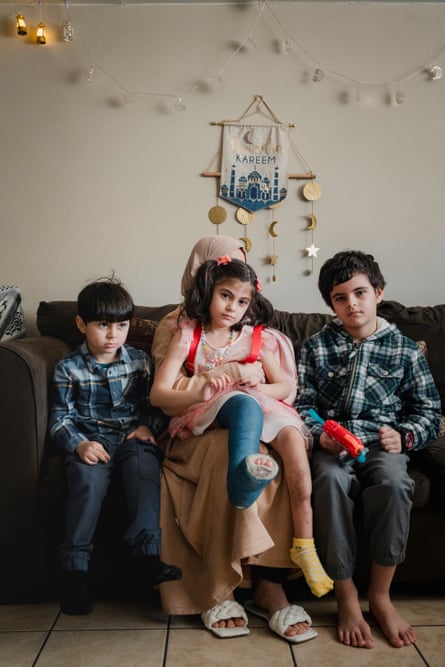
When I entered the home in north-east Philadelphia, Elias, a lively four-year-old boy, grabbed the pack of KitKats I had brought with me and began swinging it over his head. He whirled around in circles, hollering something unintelligible. In a familiar scene – I have small children of my own – his mother tried to impose order, but yielded to the greater force of a kid on sugar kept indoors by a cold snap.
Elias, his five-year-old sister Taline and nine-year-old brother Khaled were in the US because Elias and Taline needed urgent medical care. They had sustained staggering injuries when Israel’s military shot a missile at the house they were taking refuge in. The explosion cleaved Elias’s right leg off below the knee. Taline’s injuries were also severe; she arrived in the US with external fixators – pins and steel in her legs – as she battled infection. A program organized and managed by Heal Palestine, a non-profit that helps evacuate wounded children from Gaza, arranged the children’s travel with their mother, Amna.
When we met, Taline shied away from me, withdrawing into a large sofa. She peeked out from behind copious bangs while I talked with a volunteer from the organization, which had secured housing for the family for the duration of their stay in the US. Once the children’s treatment is completed, perhaps by the summer, their mother said, the family will have to leave the US for Egypt, a stipulation of the state department.
Their father, Amna’s husband, was still trapped in Gaza – he hoped to join the family in Egypt whenever the Rafah border reopens, now a distant possibility with Israel resuming its assault. In Egypt, their rights and access to education will be limited. The Egyptian government has indicated that Palestinians who have taken refuge in the country will have to return to Gaza, an uncertain prospect even before Donald Trump pronounced his intention to cleanse the territory of Palestinians. The question of what the children’s futures would be like – what kind of future was possible – cast a long shadow over our time together.
Taline was unable to walk well – her doctors in the US had tried to repair her legs hoping to avoid amputation, which remains a possibility. Elias had been fitted with a prosthesis, enabling him to move around the home. He was boisterous, and when I played back a recording of my conversation with his mother, Amna, his voice – his shouts and laughter – acted as counterpoint to the horrors Amna was describing.
Khaled, the nine-year-old, was different. He had been trapped with his father in Gaza’s al-Shifa hospital for three days during Israel’s second siege of the facility in March 2024; Taline and Elias had already been evacuated south to Rafah with Amna by that time. Khaled watched as Israeli troops killed people at the hospital. He watched, too, when his father was beaten, stripped and dragged off to the beach, where he was interrogated for two days. Israeli troops bulldozed the nearby cemetery, and when Khaled was compelled to leave on the third day of the siege, he picked his way, with all the other surviving women and children, through a field of corpses.
He was, his mother told me, suffering from emotional issues.
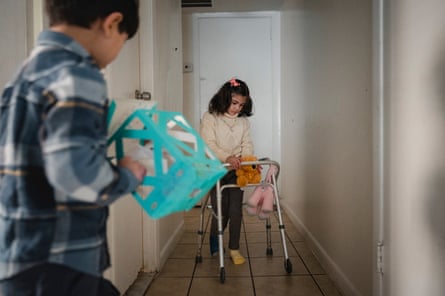
I had sought the family out – and others like them – to begin to piece together what had happened to the children of Gaza. Before October 2023, kids accounted for roughly half of the 2 million Palestinians there. Official figures put the death toll in Gaza at more than 50,000 people, a number that continues to climb as Israel renews its attacks. But a study in the Lancet estimates that Israeli troops killed more than 64,000 people in just the first nine months of their rampage, the time for which the study’s authors had data. In other words, the official count is probably dramatically understated.
Meanwhile, the UN reports that at least 14,500 children have been killed – also probably a dramatic undercount. The real mortality figure is probably unknowable, not least because so many families have been killed at once, leaving no one to account for some babies or toddlers ever having existed.
Beyond the mass death, international agencies suggest that at least 110,000 people in Gaza have been injured, including at least 25,000 children. And Unicef estimates that between 3,000 and 4,000 children in Gaza have had one or more limbs amputated. That small tract of earth is now home to more child amputees per inhabitant than anywhere else in the world.
Much of what these kids are experiencing is hidden from the world – journalists still cannot enter Gaza, and many of those who called the place home have been killed. Yet, a handful of children have made it out for treatment, in the US and elsewhere.
In the United States a life-changing injury doesn’t mean the end of a life worth living. Laws are in place to ensure people with disabilities enjoy equal rights and opportunities. For those with insurance, there is advanced medical infrastructure with follow-up care.
But what does an amputation mean in a place with no sidewalks, no streets or wheelchair ramps or prosthetists? What promise can the future hold for children who have sustained brain injuries, or burns that destroy their ability to maneuver or function? What kinds of outcomes will exist for children who have no access to psychologists, physical therapists, legal rights – or homes?
The many thousands of injured children are important. Yet together, their bodies tell a story, one that has been embossed for all time on the terrain of the 21st century. They act as the prism through which questions of international law and the protection of the vulnerable will be mediated. But if the loss these children have endured is a judgment, it is also prologue. Because their needs, their capacities and limitations, will define the contours of Palestinian society and memory forever.
Amna seemed wary of me initially. But as she spoke the words came more freely.
She had survived multiple Israeli wars on Gaza, and had lived through an 18-year siege. Then came the Hamas attacks on southern Israel on 7 October 2023, and Israel’s devastating response.
Before then, Amna recalled, life was hard, but home “was my heaven, too”. She was pregnant when the assault on Gaza began, and she delivered Faris by cesarean section on 11 December 2023.
Ten days later, Israel’s military fired a missile at her apartment building. In past wars, her neighborhood in Jabalia had been spared. “The area where we were was supposed to be safe,” Amna told me.
Amna, Khaled and Taline sustained deep cuts in that first assault, and required stitches – in Taline’s case, to close lacerations on her arm and head. A neighbor provided the address of a nurse who lived nearby. The family fled the rubble and made their way to her home.
“We got to the house. It was overflowing with displaced people. I can’t tell you how many. There were so many people,” Amna said.
The nurse stitched the open wounds on Taline’s arm and head. She explained that the laceration in Taline’s arm was deep and would require internal stitches, something she was unable to do. She also told Amna that the little girl’s arm was broken.
The entire time, the bombing continued. Soon after the nurse finished treating Taline, a second explosive struck, killing 11 people at the nurse’s home.
“The walls disappeared. You can’t see anything. You swallow the dust. You can’t hear anything,” Amna recalled.
“My first shock came when I saw [Faris]. He was in my arms. He was choking. I thought he was dead. But he hadn’t died. Someone took him from me and shook him and he began to scream. My baby who died. He was alive then.”
Skin is the body’s largest organ, made of fat and protein. The top layer, the epidermis, is where melanin is formed and where new skin cells are made. Humans wear new skin – the whole is renewed – every month. But not in the case of injury, particularly one caused by fire.
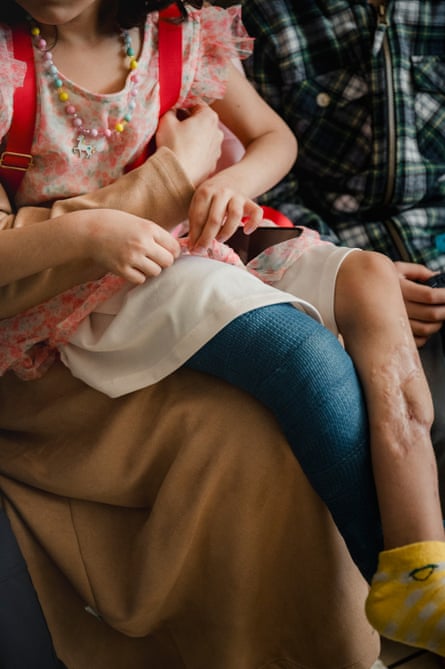
The Cleveland Clinic offers a guide to burn injuries. First-degree burns are what we experience after touching a hot kettle. The damage caused by the heat is superficial, and the skin recovers quickly. Second-degree burns mean the “top and middle” layers of the skin are damaged. The next degree of severity – third-degree burns – touches the third layer of skin and thin layer of fat just beneath it.
A fourth-degree burn goes into the muscle and gristle, the nerves. Muscle is roasted by the fifth degree. Sixth-degree burns scorch bone.
In Gaza, the extraordinary incidence of amputations is explained not only by the traumatic force injuries caused by relentless Israeli bombardment, but burns and resulting infections as well. Many amputations should not have been necessary.
Dr Feroze Sidhwa, speaking from Gaza, said that he saw many children lose limbs that could have been saved under other circumstances. He cited the destructiveness of the weapons, the high rates of infection given the sanitary conditions at hospitals, the scarcity of necessary medical equipment, and malnutrition as leading contributors to amputation.
“It’s very difficult to heal a wound when you have no protein intake for a week, let alone for 15 months,” he said
Dr Thaer Ahmad, another doctor who operated in Gaza, explained that treating burns requires a lot of resources that were often unavailable. In ordinary circumstances, he said, a physician may be willing to tolerate an infection that results from a burn, since infections can typically be treated.
“But given the pressure that’s being put on the health system and practitioners in Gaza, an amputation is a relatively quick treatment than can be done,” he said.
We may never learn how many children had treatable wounds that, in different circumstances, may have resulted in their keeping a limb.
Baylasan was 11 when her house was bombed in Khan Younis. We met in a suburb of Washington DC in December 2024, near where she was receiving treatment.
“I’m afraid of loud noises,” she said.
She told me about the first nights of the war in Gaza, in October 2023. A missile exploded nearby one evening: “I woke up and started screaming. My mother came to comfort me. I was afraid; I was shaking.”
The night of her injury, in November of 2023, her mother had made her a cheese sandwich before bed.
“At nine or 10 I went to sleep – I didn’t feel anything until 2am. I heard Mama screaming under the rubble. I didn’t know I was under the rubble.”
She lost consciousness and awoke four days later in the hospital, unaware that her leg had been amputated.
“Every time someone would sit by my leg I would scream thinking they would injure it.”
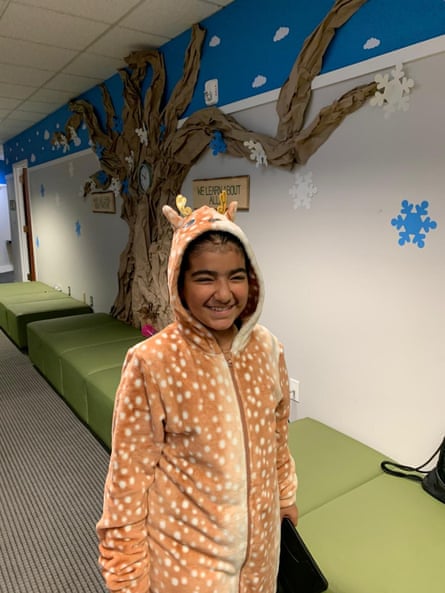
Baylasan – vivacious, funny and sarcastic – stood out when we spoke. She was the only child I met who wasn’t accompanied by a guardian. She was alone in Virginia, staying with a Palestinian-American family who volunteered through Heal Palestine to host her. She’d made friends at school, and was learning English. When I asked about her favorite music she lit up. She loved Al Shami, a pop singer from Syria.
Baylasan’s mother survived that bombing, and after being evacuated for treatment in Turkey with Baylasan, had traveled to Belgium. Baylasan’s brother had been studying there when the assault on Gaza began. He had succeeded in obtaining a visa for their mother, who traveled there after Baylasan departed for the US. The family hopes to receive asylum in Belgium, a process that could take 18 months.
When we met, Baylasan was completing intensive physical therapy at the Prosthetic Care Facility of Virginia. Her father remained in Gaza, where an amputation virtually guarantees a life of social isolation, no access to support services, and limited opportunity for emotional recovery.
When I asked Baylasan whether her father had the means to join the family in Belgium, she gave me an exasperated look; it was a stupid question.
“Raho al masary. Inharago.”
The money’s gone. It burned.
Gaza was a difficult place before October of 2023. My own memories of life there – I was born in Rafah – are imbued with a feeling of closeness, of being hemmed in. For many people, education was the only path to a better life, which perhaps helps explain why literacy rates in Gaza exceeded 97.8% for adults. The degree of educational attainment was also reflected in the relatively well-developed medical infrastructure in the territory.
Doctors Without Borders reports that before the Israeli assault, there were 36 hospitals serving 2.3 million residents in Gaza – one for every 60,500 people. People in the US have more access – one hospital for every 23,500 people – but the development of the healthcare sector surpassed what could be reasonably expected in light of Israel’s longstanding siege on the impoverished territory.
Today, most of that infrastructure no longer exists. Gaza’s reconstruction will require more than $50bn over 10 years, according to a UN, EU and World Bank assessment. That’s saying nothing about the lost human capital, the doctors and nurses and the people who educate and train them. The Guardian reports that more than 1,000 healthcare professionals were killed by the Israeli military. Of Gaza’s 36 hospitals, only 16 are partially functioning today, according to a UN report. If critically injured, disabled people in Gaza could lead dignified, productive lives before 2023, that no longer seems possible.
Organizations like Heal Palestine and the Palestine Children’s Relief Fund have worked assiduously, against long odds in challenging conditions, to meet some of the need. Steve Sosebee, who leads Heal Palestine, described the organization’s work as comprehensive. Its staff operate a field hospital in Gaza. They also manage a mental health program and food kitchens there. The organization has also facilitated the evacuation of and care for 37 severely injured children. It continues to provide mental healthcare even after their physical wounds have healed.
“We get them the medical care that they need but otherwise don’t have access to,” Sosebee explained. “We’re also providing a holistic approach to their healing which is mental health therapy, education and community support.”
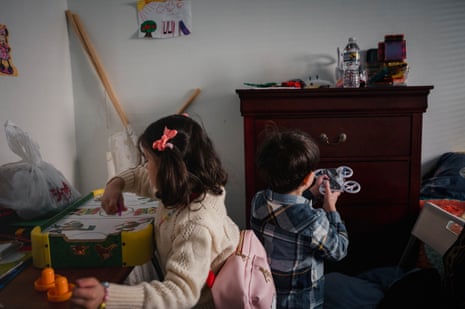
Many of those who escaped Gaza for medical treatment – including the 11 children I met with in the US and Egypt – did so before Israeli troops overran the Rafah border with Egypt in May of last year. Their petitions for medical evacuation involved a long chain of coordination through the health ministry in Gaza, the Egyptian government, the World Health Organization and the Israeli army. Typically they traveled to the Rafah border with Egypt and from there were loaded into ambulances which then undertook the six-hour drive from the border to Cairo.
I met Marah and her mother, Amal, in Long Island. They were staying at a Ronald McDonald House, a facility that houses families with children who require long-term care, near the hospital where Marah was being treated.
Marah, who is one of seven children, was 16 when an Israeli bomb struck her aunt’s house in Al-Shaboura, in Rafah, where she was sheltering. Both of her legs had been amputated above the knee, near her pelvis.
In New York, Marah had numerous surgeries to prepare her for prosthesis. When we met, she was learning to walk – a process which is markedly more difficult for those with amputations above the knee. Her days are filled with physical therapy and more physical therapy, as she put it to me.
The family’s nightmare began early, and like virtually everyone else I spoke with, continued until they left Gaza.
In October 2023, an Israeli airstrike destroyed the family home in Al Zeitoun in northern Gaza, sending them to seek shelter in Marah’s aunt’s home. Eight days later, another bomb killed her brother, her sister, her brother-in-law; and one of her sister’s young daughters.
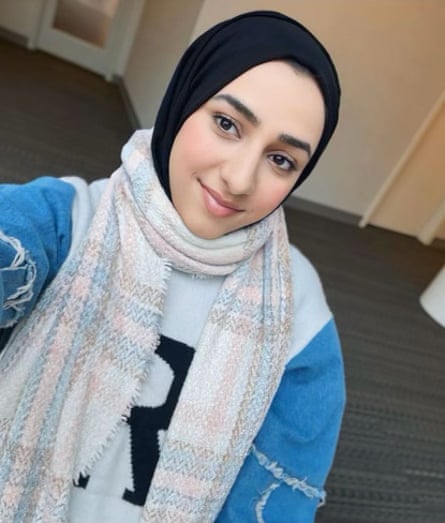
Another niece, a 15-month-old child named Mona, survived the bombing with serious injuries. The family took Mona with them and fled south to the home of another one of Marah’s aunts in Rafah. At 3am, two months after arriving, the bombers struck again. A missile exploded in the room where Marah was sleeping with Mona.
The toddler was killed in that bombing, joining her mother, father and baby sister in death.
“I remember waking up briefly in the rubble and calling for my father. I thought he hadn’t heard me and I said the shehada [an Islamic prayer] three times and after that I don’t have any memory of the next two or three weeks,” Marah told me.
Marah’s legs were badly lacerated and mangled; she had multiple fractures and a head injury. She was taken to a hospital which, lacking resources, directed her rescuers to another hospital.
Overwhelmed staff at the second hospital believed she was dead and moved her to the morgue.
“My [surviving] brother – he’s three years older than I am. He came close to say goodbye to me and came close to my face and saw that I was breathing. He told the doctor: ‘She’s breathing.’”
Marah was in a coma for eight days, during which her doctors amputated her legs.
Marah’s mother, Amal, was also severely wounded in the strike that injured her daughter. She made a point of serving me coffee despite her difficulty walking.
“I had 22 operations,” Amal told me. “The flesh had melted off my legs.”
Amal spent eight months at the Emirati hospital – a field hospital in Rafah, which was operating through the efforts of the UAE. She decided to leave, despite needing additional care, when she learned that Marah would be able to travel to New York for treatment through Heal Palestine. After extensive back and forth with Israeli and international officials, Marah succeeded in obtaining permission to leave. Heal Palestine coordinated her travel and care by enlisting the services of various hospitals and charities, and raising funds for travel. Marah’s father and brother remained in Gaza.

Marah and Amal will eventually have to travel to Egypt from New York, where they will await their return to Gaza.
I asked Amal about her hopes for her daughter’s future.
“There is no future in Gaza for someone like Marah,” she told me, gesturing to her daughter in her wheelchair. “I want her to complete her education.”
I traveled to Cairo to meet children who had been injured and were receiving care there. I wanted to see too, what life could be like for Marah, Elias, Khaled and Taline, all of whom are meant to go to Egypt after completing treatment in the US.
I met Malik, a little eight-year-old boy who had suffered a severe head injury when his home in Gaza was bombed, in a suburb of Cairo. He had been evacuated to the US where doctors had performed a cranioplasty – a titanium plate covered most of the back of his head. After three months of treatment in Florida, he and his mother returned to Egypt in August of last year. Malik slurred his speech but had learned to walk again by the time we met – he accompanied me to the store to buy chocolate for him and his sisters.
Ibtisam, Malik’s mother, described pulling him from the rubble from an airstrike on their home in Nuseirat on 8 January 2024.
“I called for my girls; they were screaming and crying. It was dark – you couldn’t see anything. I called for Malik but he didn’t respond,” she said.
“I started feeling around in the dark … I found a pile of hot rubble and glass. I started to uncover him there. I pulled him out and was cut by glass. I held him. He was awake but he wasn’t responding to me. I cradled his head with my hand and my hand went inside – into his head.”
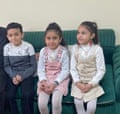
Prospects for a life in Egypt are better for those with life-altering injuries than they are in Gaza, but public infrastructure there cannot truly support the needs of disabled people.
I spoke with a developmental neuroscientist who leads a lab at a large research university in Philadelphia. He requested anonymity because of his lab’s reliance on funding provided by the National Institutes of Health, which is at risk under the Trump administration.
“[Brain development] is a process of refining cellular connections postnatally,” he explained.
“Kids’ brains are remarkably resilient and can recover from things that adult brains never could … but there is a limit to the ability to repair and rewire around injuries.”
Brain-injured patients need years of support from “trained physical therapists and occupational therapists and physicians to really maximize the amount of recovery [they] can get”, he said. That’s in addition to the child psychologists who are tasked with addressing the post-traumatic stress disorders that attend trauma.
Dr Hazem Madi, a Palestinian doctor from Gaza who managed to escape to Cairo in February 2024, explained that while private hospitals in the Egyptian capital can meet a high standard of care, many public hospitals cannot. Access to occupational therapists and child psychologists is limited as well.
An Amnesty International report elaborates: “Egypt’s public healthcare system has been struggling with a shortage of public hospital beds, offering only 1.4 beds per 1,000 people, which is significantly below the global average of 2.9 beds per 1,000 people.” In that regard, Malik is more fortunate than others. Heal Palestine has facilitated his ongoing mental and physical therapy in Cairo.
Beyond medical care, Egyptian authorities do not permit Palestinian refugees from Gaza – roughly 100,000 people – to register their children in public school. Malik and his sisters were attending school remotely – teachers in Gaza had succeeded in organizing virtual learning, albeit haphazardly and unevenly.
Nor can the challenge of earning a living be overstated. Malik’s family rely on Heal Palestine for housing – the organization rents an apartment for them in 6 October City near Cairo. But the aid won’t last forever, and Palestinians in Egypt lack residency permits and cannot work. Their status is, like so much about their lives, precarious.
Amna, the young mother I met in Philadelphia, searched frantically for her husband and children after the strike at the nurse’s home.
“When I saw them I was shocked. Elias’s leg was gone. Taline looked … Her legs were mangled. Shredded. They were going to die. I collapsed. Khaled carried his brother out and he returned and carried his sister out. Can you imagine a nine-year-old in that situation?”
Her husband sustained a leg injury too. The family spent a night in the stairwell. The ambulance never came – no one would risk the drive to Jabalia. Tourniquets kept the children alive through the night.

“All night – I want you to imagine – all night. My kids are saying I need water. Please give me water. All night. The bombing was going all night. It wouldn’t stop.”
The area was bombed again in the morning. Someone suggested they try to evacuate to a nearby school.
“Everyone said we have to go. Everyone was fleeing from death. My husband couldn’t stand. How was I going to move my children? I said I’m not going anywhere. I can’t leave Elias and Taline.”
A stranger came along and offered to carry Elias and Taline. He helped make crutches from discarded wood for Amna’s husband and encouraged him to try to walk. The school was no more than 200 meters away.
Amna started to walk, which was difficult since she had given birth by C-section 10 days earlier.
“There were people in front of me,” she said. “They had their kids. They were shelled. Limbs. Things that I still can’t comprehend. Those people wanted to enter the school and they were killed … The soldiers shelled them.”
Amna fled into a nearby house and was separated from her husband, who was with Taline and Elias. She remained with Khaled and her infant, Faris. “I didn’t know if Elias and Taline were alive or dead. If my husband was dead.”
Elias and Taline found refuge with their father at al-Shifa hospital. They received basic care, keeping them alive.
Amna spent two days in hiding until the Israeli troops withdrew. Finally, she left with her baby and son Khaled, who carried a makeshift white flag. They emerged into a new landscape.
“We were barefoot. Everything was destroyed. No school. No hospital. The landmarks – it wasn’t Jabalia any more.”
Eventually, she made her way to al-Shifa, the last operating hospital in the area. There, she found her husband with Elias and Taline.
“They were on the ground. The crowd was unbelievable. People stepping on one another. My children were on the ground.
“I gave the doctor my infant. He said to me: ‘Your son needs oxygen’ – there was none. ‘Try to nurse him – hold him.’
“I understood. My son was going to die. Hours or a day or two – he was going to die. Six hours later he died. Faris died. He was 12 days old.”
Amna buried Faris in the Shifa cemetery, the one Khaled would walk through after it had been bulldozed by Israeli forces.
Soon after Faris died, an ambulance drove Amna, Taline and Elias south to another hospital in Rafah. Weeks later, she secured permission to leave Gaza with Elias. An Egyptian border guard was moved by Taline’s condition and said he would let her out too. Soon after that, Khaled was allowed to travel south in an ambulance with a cousin who had been injured. Eventually, he was permitted to join his mother in Cairo.
The children’s father stayed behind in Jabalia, which was bombed again this month.
I met Baylasan in December of 2024. In March, I learned that she had been reunited with her mother and brother in Belgium, where Heal Palestine is providing them with housing. For now, Baylasan is completing her physical therapy treatment virtually. When it’s time she will travel back to Virginia for a new prosthesis. Baylasan’s father remains in Gaza.
Marah and her mother were supposed to leave for Egypt in March, but the severity of Marah’s injuries led her doctors to conclude that she needed at least another nine months of therapy and treatment in the US. She’s now studying for a high school equivalency exam.

Elias, Taline and Khaled are enrolled in school in Philadelphia. Taline may have another surgery scheduled in the spring, an attempt to save her leg.
In November of 2024 – the same month I first visited Marah – hundreds of Israelis traveled to Amsterdam to watch a football match. They received a lot of attention when they attacked, and were attacked by, locals there. Yet in all the reporting, one provocation stood out to me: the Israeli visitors sang: “Why is school out in Gaza”?
And they answered: “There are no children left.”
Almost all of the small children I met in the course of writing this story carried haunted looks. I asked them things like “What are your hobbies?” and “What’s your favorite show on television?” and I was met, mostly, by blankness. Beyond their physical injuries, they have experienced unspeakable loss. Their schools, their neighborhoods are gone. Many of their loved ones, siblings and friends are now dead.
If childhood is a time of innocence, small hurts and joys, playground anxieties and high drama, then, the Israeli fans, for all their venom, were right. There is no childhood in Gaza.

 1 month ago
29
1 month ago
29

